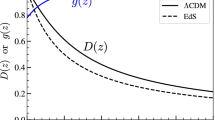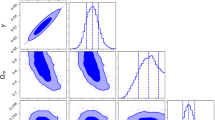Abstract
The Lehto-Tifft redshift quantization model is used to predict the redshift distribution for certain classes of quasars, and for galaxies in the neighborhood of z = 0.5. In the Lehto-Tifft model the redshift is presumed to arise from time dependent decay from an origin at the Planck scale; the decay process is a form of period doubling. Looking back in time reveals earlier stages of the process where redshifts should correspond to predictable fractions of the speed of light. Quasar redshift peaks are shown to correspond to the earliest simple fractions of c as predicted by the model. The sharp peaks present in deep field galaxy redshifts surveys are then shown to correspond to later stages in such a decay process. Highly discordant redshift associations are expected to occur and shown to be present in the deep field surveys. Peaks in redshift distributions appear to represent the spectrum of possible states at various stage of the decay process rather than physical structures.
Similar content being viewed by others
References
Arp, H., Bi, H.G., Chu, Y. and Zhu, X.: 1990, A&A 239, 33.
Burbidge, E.M. and Sargent, W.: 1970, in: D. O'Connel (ed.), Nuclei of Galaxies, North Holland, p. 351.
Burbidge, G.: 1968, ApJ 154, L41.
Burbidge, G.: 1980, Texas Symp. Proc. Ann. New York Acad. of Sci.
Burbidge, G. and Napier, W.M.: 2001, AJ 121, 21.
Cohen, J.G. et al.: 1996, ApJ 471, L5.
Cohen, J.G. et al.: 1999, ApJS 120, 171.
Cohen, J.G. et al.: 2000, ApJ 538, 29.
Guthrie, B.N.G. and Napier, W.M.: 1991, MNRAS 253, 533.
Hawkins, E., Maddox, S.J. and Merrifield, M.R.: 2002, MNRAS, in press.
Hoyle, F., Burbidge, G. and Narlikar, J.V.: in: A Different Approach to Cosmology, Cambridge, p. 332.
Karlsson, K.G.: 1977, A&A 58, 237.
Napier, W.M.: in this conference.
Schmidt, M. and Green, R.F.: 1983, ApJ 269, 352.
Tifft, W.G.: 1976, ApJ 206, 18.
Tifft, W.G.: 1996, ApJ 468, 491.
Tifft, W.G.: 1997, ApJ 485, 465.
Tifft, W.G. and Cocke, W.J.: 1984, ApJ 287, 492.
Tifft, W.G. and Cocke, W.J.: 1989, ApJ 336, 128.
Veron-Cetty, M.P. and Veron, P.: 1996, A Catalog of Quasars and Active Galaxies, ESO Scientific Report - electronic form.
Author information
Authors and Affiliations
Rights and permissions
About this article
Cite this article
Tifft, W. Redshift periodicities, The Galaxy-Quasar Connection. Astrophysics and Space Science 285, 429–449 (2003). https://doi.org/10.1023/A:1025457030279
Issue Date:
DOI: https://doi.org/10.1023/A:1025457030279




